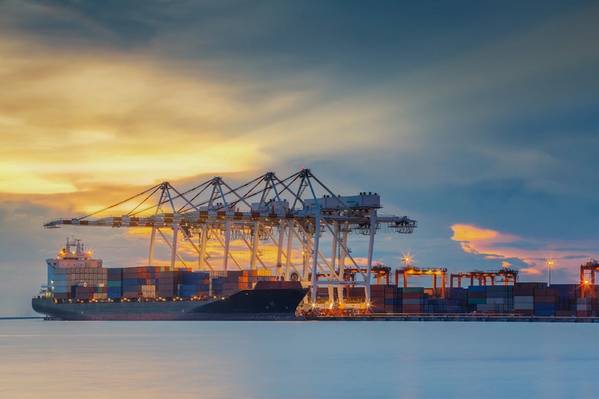
China's exports rebounded more strongly than expected in April after a surprise drop the previous month, suggesting global demand remains relatively resilient and providing a cushion to the economy amid a heated trade dispute with the United States.
Imports in April also grew more robustly than anticipated, signalling China's domestic demand is holding up well, good news for policymakers looking to soften the blow from any trade shocks.
China's April exports rose 12.9 percent from a year earlier, beating analysts' forecasts for a 6.3 percent increase and snapping back from a 2.7 percent drop in March that economists believe was heavily distorted by seasonal factors.
Some analysts, however, warned the strong April export showing was mostly seasonal and that a multi-year global trade recovery may have topped out.
"Shipments still look healthy but today’s data does point to a softening in external demand recently," Capital Economics senior China Economist Julian Evans-Pritchard wrote in a note, estimating that exports by volume may have actually slipped on a month-on-month basis.
"The backdrop of the ongoing trade negotiations between China and the U.S. is one in which global growth has already peaked and China’s export performance is waning as a result."
Still, China has outperformed other major Asian trade-reliant economies such as Japan and South Korea recently, suggesting its exporters may be ramping up shipments of finished goods and purchases of raw materials and parts in case of supply chain disruptions following both sides' tariff threats.
"We may see some retreat in exports in the following months," said Betty Wang, senior China Economist at ANZ, referring to the risk of a slowdown after a burst of "front-loading" by shippers eager to beat any punitive measures.
Export growth was led by a 20.7 percent increase in shipments of high-tech products, led by mobile phones.
Strong Import Demand
Imports also beat expectations, growing 21.5 percent on-year, beating forecasts of 16 percent growth, and accelerating from a 14.4 percent rise in March.
The strong readings suggest China's domestic demand remains resilient despite rising corporate borrowing costs and cooling property sales, the two risk factors most commonly cited by economists who are expecting a slowdown.
Imports were drive by China's continued appetite for resources and agricultural commodities but also by hi-tech products, especially electronic integrated circuits, which have surged 36 percent since the start of the year.
The tech buying binge comes as China's strategic industrial policies come under increased global scrutiny due to complaints about forced technology transfer and intellectual property theft, with integrated circuits, or chips, an especially sensitive area.
China imported $94.7 billion of chips in the first four months of the year, accounting for nearly 15 percent of total imports and possibly pointing to solid growth in electronics exports for at least a few more months.
Trade Tussel
The world's two largest economies have threatened each other with tariffs on tens of billions of dollars' worth of exports in recent months, leading to worries that Washington and Beijing may plunge into a full-scale trade war that could damage global growth and destabilise financial markets.
While economists still believe a compromise can be reached and the worst-case scenario avoided, the risk of disruptions in trade and investment have added to existing concerns about an economic slowdown in China this year.
High-level discussions between the two sides in Beijing last week appeared to make little substantive progress in defusing trade tensions apart from an agreement to hold more talks.
China's top economic official will visit Washington next week to resume trade talks with the Trump administration, the White House said on Monday.
The Trump administration has drawn a hard line, demanding a $200 billion cut in the Chinese trade surplus with the United States by 2020, sharply lower tariffs and advanced technology subsidies, according to people familiar with the top-level U.S.-China talks last Friday.
President Xi Jinping pledged recently to increase imports, in comments that were seen as a bid to defuse tensions with the United States and other trading partners.
But, highlighting the challenge of reducing that gap any time soon, China's trade surplus with the United States widened to $22.19 billion in April, from $15.43 billion in March, according to Reuters calculations based on customs data released on Tuesday.
For January-April, it rose to $80.4 billion, from about $71 billion in the same period last year.
China's exports to the United States rose 9.7 percent in April from a year earlier, slowing from a 14.8 percent rise in the first quarter. Its imports from the U.S. rose 20.3 percent in April, the fastest growth in three months.
Trade Shifts Already Taking Place
China posted a total trade surplus of $28.78 billion for the month, compared with forecasts for a $24.7 billion surplus in April and a rare deficit of $4.98 billion in March.
While neither the United States nor China has set a hard timeframe for imposition of tariffs, the threat of disruptions and higher costs may already be altering global trade patterns as well as companies' production and marketing strategies.
Companies in both countries have said that they are adjusting business plans and becoming more cautious in the face of the worsening trade environment and the threat of more tariffs.
China's global exports of steel and aluminium -- a major point of contention with Washington and other countries -- both rose in April as U.S. tariffs and sanctions caused a spike in global prices, prompting mills and smelters to send more metal abroad, analysts said.
(Reporting by Lusha Zhang and Elias Glenn; additional reporting by Stella Qiu; Editing by Kim Coghill)



